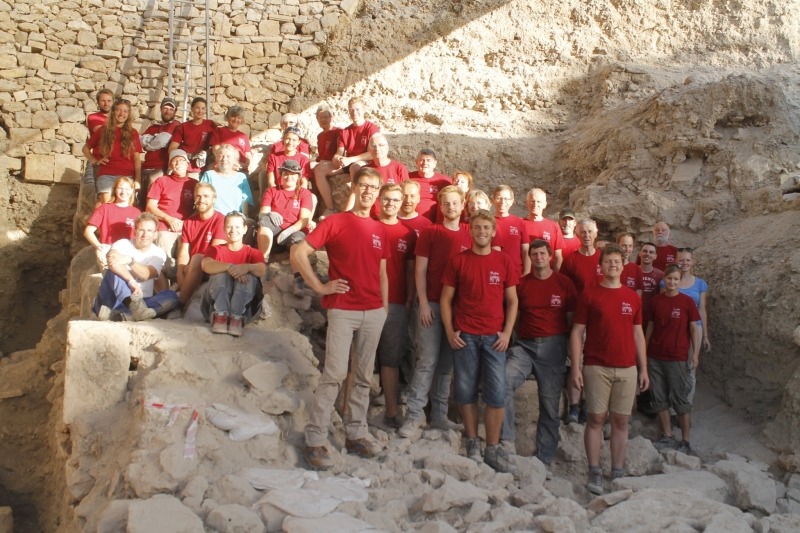
Areal I (2017)
The most important result of the 2017 campaign was the exposure of two well preserved Byzantine rooms. Although there is no architectural link visible (yet) between the two rooms, they both are furnished with the same wall-plaster. This plaster contains orderly implemented small perforations typical for a basecoat. Those were usually covered with a thinner layer of plaster, sometimes decorated with paintings. Nothing from top-layer preserved, therefore it might have never been executed. These two rooms lay only relatively close, roughly 10 m, to the city wall. The youngest phase of this fortification wall is dated into the first half of the 5th century.
In the corner of the western room lay the opening to a well-preserved cistern below the floor of the room. The basin measured 2.0 x 3.0 m and 2.5 m in depth and was supplied via a small channel. The opening measure 0.36 m and has been surrounded by an installation during a later phase. The installation was built in a way, it basically made the opening unusable. On the inside, the plaster is almost entirely preserved with the exception where the rope used to remove water cut into the plaster.
The eastern room was cut by a later wall which destroyed the eastern wall of the room, but the structure led to parts of a mosaic floor as well as the plaster on two adjacent walls being preserved in its western part. Below the room, a well-plastered canal can be seen.
A number of finds make dating these rooms into the Byzantine era viable. The way the perforated plaster is executed is typical for that era. Coins found in the plaster seem to be dateable into the 5th century AD, although we have to await professional cleaning an reading of the coins. A well datable find is the stamped bottom of an amphora found in the eastern room. It is imprinted with a so-called „Kastenmonogramm“ used exclusively during the 5th and 6th century AD. According to sigillography expert Alexandra Wassiliou-Seibt (University Vienna) the imprint reads (Universität Wien) ΜΑΚΡΩΒΙΟΥ ΚΟΥΒΙΚΟΥΛΑΡΙΟΥ translating to „the treasurer Makrobious“.
